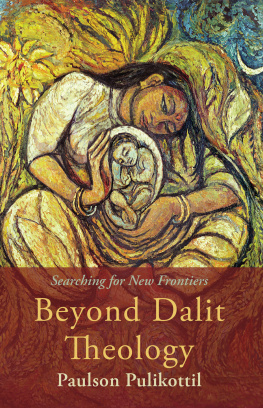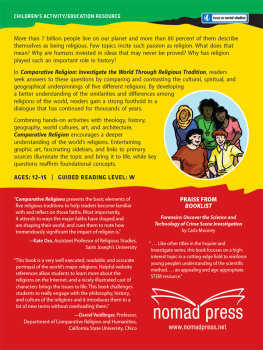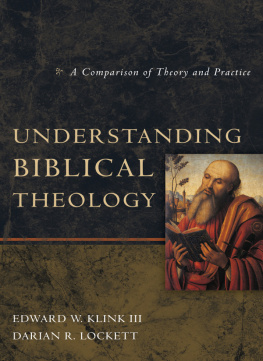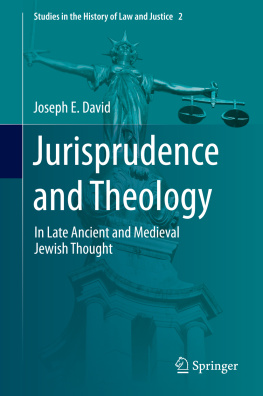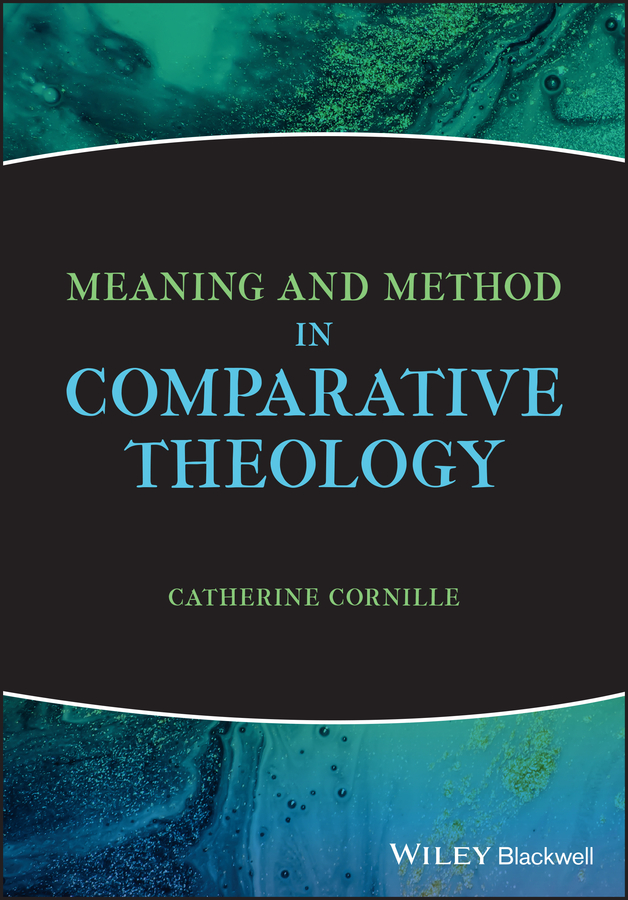
Table of Contents
Guide
Pages
Meaning and Method in Comparative Theology
Catherine Cornille

This edition first published 2020
2020 John Wiley & Sons Ltd
All rights reserved. No part of this publication may be reproduced, stored in a retrieval system, or transmitted, in any form or by any means, electronic, mechanical, photocopying, recording or otherwise, except as permitted by law. Advice on how to obtain permission to reuse material from this title is available at http://www.wiley.com/go/permissions.
The right of Catherine Cornille to be identified as the author of this work has been asserted in accordance with law.
Registered Offices
111 River Street, Hoboken, NJ 07030, USA
John Wiley & Sons Ltd, The Atrium, Southern Gate, Chichester, West Sussex, PO19 8SQ, UK
Editorial Office
The Atrium, Southern Gate, Chichester, West Sussex, PO19 8SQ, UK
For details of our global editorial offices, customer services, and more information about Wiley products visit us at www.wiley.com.
Wiley also publishes its books in a variety of electronic formats and by printondemand. Some content that appears in standard print versions of this book may not be available in other formats.
Limit of Liability/Disclaimer of Warranty
While the publisher and authors have used their best efforts in preparing this work, they make no representations or warranties with respect to the accuracy or completeness of the contents of this work and specifically disclaim all warranties, including without limitation any implied warranties of merchantability or fitness for a particular purpose. No warranty may be created or extended by sales representatives, written sales materials or promotional statements for this work. The fact that an organization, website, or product is referred to in this work as a citation and/or potential source of further information does not mean that the publisher and authors endorse the information or services the organization, website, or product may provide or recommendations it may make. This work is sold with the understanding that the publisher is not engaged in rendering professional services. The advice and strategies contained herein may not be suitable for your situation. You should consult with a specialist where appropriate. Further, readers should be aware that websites listed in this work may have changed or disappeared between when this work was written and when it is read. Neither the publisher nor authors shall be liable for any loss of profit or any other commercial damages, including but not limited to special, incidental, consequential, or other damages.
Library of Congress CataloginginPublication Data
Names: Cornille, C. (Catherine), author.
Title: Meaning and method in comparative theology / Catherine Cornille.
Description: First edition. | Hoboken : Wiley, 2019. | Includes bibliographical references and index. |
Identifiers: LCCN 2018056440 (print) | LCCN 2019005559 (ebook) | ISBN 9781119535157 (AdobePDF) | ISBN 9781119535249 (ePub) | ISBN 9781119535225 (pbk)
Subjects: LCSH: ReligionComparative studies. | ReligionMethodology.
Classification: LCC BL41 (ebook) | LCC BL41 .C625 2019 (print) | DDC 202.01dc23
LC record available at https://lccn.loc.gov/2018056440
Cover Design: Wiley
Cover Image: CARACOLLA/Shutterstock
For Wilfried Cornille, my father
Acknowledgments
The young discipline of comparative theology is taking shape through the combined effort of many scholars and students whose pioneering work has inspired and informed the theoretical models and methodological reflections presented in this book. Among the trailblazers of this academic field, I wish to thank in particular Francis Clooney, David Burrell, James Fredericks, Paul Knitter, Daniel Madigan, John Keenan, Klaus von Stosch and Joseph O'Leary, whose friendship and support, and fearless exploration of new ways of doing theology, have sustained and inspired me.
This book has grown out of years of teaching and introducing graduate students to the complex field of comparative theology. I want to thank the many students whose questions and comments have helped to shape and sharpen my thinking on the subject. Thanks in particular to my colleagues and students in comparative theology who participated in the yearlong doctoral colloquium focusing on draft chapters of the book: John Makransky, Ruth Langer, James Morris, David Mozina, Natana DeLongBas, Michael VanZandtCollins, Bethany Slater, Hans Harmakaputra, Katie Mylroie, Sam Zhia, WonJae Hur, and David Mayaan. Their critical and constructive feedback, arising not only from Christian, but also from Buddhist, Jewish, and Muslim approaches to comparative theology has been invaluable. The lively discussions during the seminars strengthen my hope that this book will stimulate critical reflection on some of the fundamental methodological questions in comparative theology and draw in theologians from any religious tradition engaged with the teachings and practices of any other tradition. A special thanks to David Mayaan for his careful and thoughtful editorial work. I am grateful also to Marianne Moyaert and ThierryMarie Courau for reading selected chapters of the book and for their helpful comments.
Finally, I wish to thank my husband, Jeffrey Bloechl, and my children, Tessa, Nicholas and Julia, for filling my life with joy and meaning.
Introduction
Comparative theology forms an integral part of every religious and theological tradition. Throughout history, religions have developed their beliefs, practices, and overall sense of identity through a process of borrowing, refuting, and reinterpreting elements from other religious traditions. Any new religion builds on the materials of prior religions through a play of adoption and rejection that remains profoundly indebted to the other. And in the course of history, religions continue to consciously or unconsciously absorb ideas and practices of other religions even as they clash with one another or coexist in the same cultural sphere. As such, the reality of religious growth and change through engaging the teachings and practices of other religions is as old as the history of religions.
What is new about the modern discipline of comparative theology is the conscious, open, and systematic engagement of other religions in the process of theological development. While religious borrowing traditionally happened unwittingly or without revealing its source, comparative theology openly acknowledges and credits other religions as a possible repository for constructive theological insight and inspiration. This attitude of humility and generosity toward other religions is the result of both historical and theological developments, and of the remarkable scholarly advances in the study of religions in the course of the past century.
A synthesis of religious studies and theology, comparative theology draws from the methods of both disciplines. From the history and the comparative study of religions, it has inherited not only a vast amount of scholarly material, but also an understanding of the complexity and diversity of religious tradition and of the need to focus on particular texts, teachings or practices. It has also gained a keen awareness of the challenges and instability of applying what the one thing shows me to the case of two things Comparative theologians are thus expected to engage in an indepth study of another religion, of its languages and history in order to understand a particular religious text in its own historical and cultural context and in order to perform relevant and fruitful comparisons. Like theology, on the other hand, comparative theology is oriented to gaining not only greater understanding of a particular religious phenomenon, but of the ultimate reality and truth itself. It is thus an explicitly normative discipline that involves the comparison of religions from a faith perspective and/or for the purpose of advancing theological understanding.
Next page

